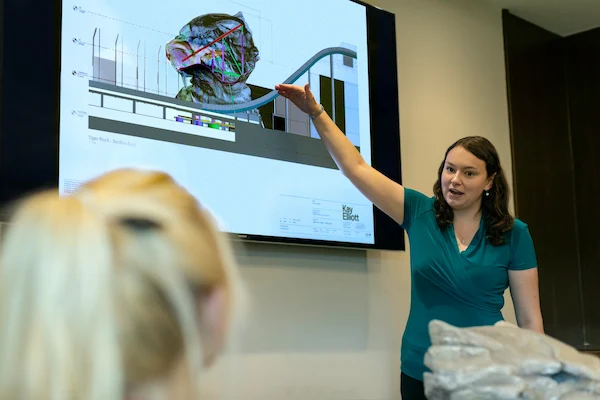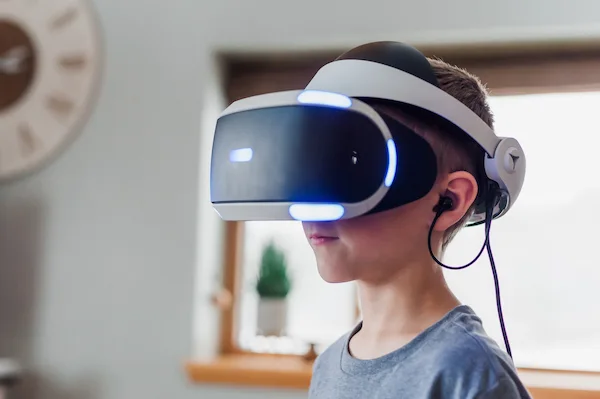Though not an obvious application of the Internet of Things (IoT), the education sector is a great candidate. IoT is an ideal strategy for creating vibrant information and distributing it effectively to students of all ages.
As more schools and educators implement technology into their daily lives and routines, we’re beginning to see the benefits brought about by new innovations. Teachers and administrators are now able to find a way to stay connected, regardless of where they are, and they can also use this technology to create smart lesson plans to help students learn more comprehensively and effectively.
IoT in e-learning and education is transforming the way that information is delivered to teachers and students. In fact, IoT and e-learning resources make it easier for teachers to plan lessons according to individual student needs instead of a one-size-fits-all approach. This means teachers can provide more relevant curricula and better prepare students for tomorrow’s workforce. With this in mind, here are the top three ways education is being revolutionized by the use of IoT.
Interactive Presentations

A presentation that engages students with hotspots, videos, pop-ups, and more features is far more likely to stimulate users than an inert, sterile slideshow. Interactive features in presentations are designed to encourage students to participate in the presentation and can turn your outdated slideshow experience on its ear.
Interactive presentations help keep students engaged. They are more interactive, so they promote learning and keep students involved, and encourage participation. In fact, interactive presentation tools can ensure that none of your students will be tempted by distractions, like fiddling with phones or watching something else on their screens. To be sure, interactive presentation is an innovative IoT method of holding the attention of students of all ages for a better learning experience.
Customized Curriculums For Students

While the pandemic was regrettable, it revolutionized how educators create and distribute lesson plans to students. The need for online, remote education sessions liberated educators to create custom curriculums that can be both interactive and versatile.
Today, teachers can pull data from individual students to build individualized lesson plans. IoT sensors can now assist in planning relevant lessons tailored to student needs, rather than teaching a one-size-fits-all approach. One effective way to execute this is by implementing smart educational robots that customize curriculum pace and content based on the student’s accuracy when answering the questions. Using IoT in classrooms allows teachers to get insights into what is working properly and what isn’t working so they can create lesson plans with greater success.
Immersive Language Learning

Increased student engagement is important for the long-term success of any school or educational institution – this is especially true in the art of language education. Immersive language learning is a better way to learn a second language than any other tact. Not only will it help students learn the language faster, but they will appreciate how much fun it can be.
Research shows that applying the 80/20 rule when learning languages yields great results. That is, students learn better when they are exposed to only 20% new, challenging material with a mix of 80% of information they’ve already learned. But what’s the best way to decide how much and which kind of content to teach? Presenting students with a large volume of complicated information can make it harder for students to keep up. That’s why teachers are now relying on IoT when planning their language lessons. With integrated tech and sensors, educators can get a direct analysis about what lessons have already been learned and mastered versus new information – making applying the 80/20 rule when learning languages easier for educators and more achievable for students.
Moreover, online courses & “realistic” speaking websites might be part of the curriculum, but IoT takes learning languages a step further. For instance, VR (virtual reality) goggles are an example of IoT that allows students to speak in the target language and interact with animated figures. Using IoT for immersive language learning is an ideal way to help students learn languages so they can go on to travel the world and speak their native language fluently.
Conclusion
In conclusion, if you are an educator in today’s modern world, we hope these insights into how IoT can help you teach students more effectively prove inspiring. To be sure, IoT is here to stay, and it is a game-changer in terms of instructing, teaching, and supporting students of all ages in improving their education goals. Moreover, IoT can also be a huge aid in keeping you, as an educator, organized and more effective in your teaching efforts.
- SEO Powered Content & PR Distribution. Get Amplified Today.
- Platoblockchain. Web3 Metaverse Intelligence. Knowledge Amplified. Access Here.
- Source: https://iotworm.com/how-the-iot-is-helping-educators-today/



